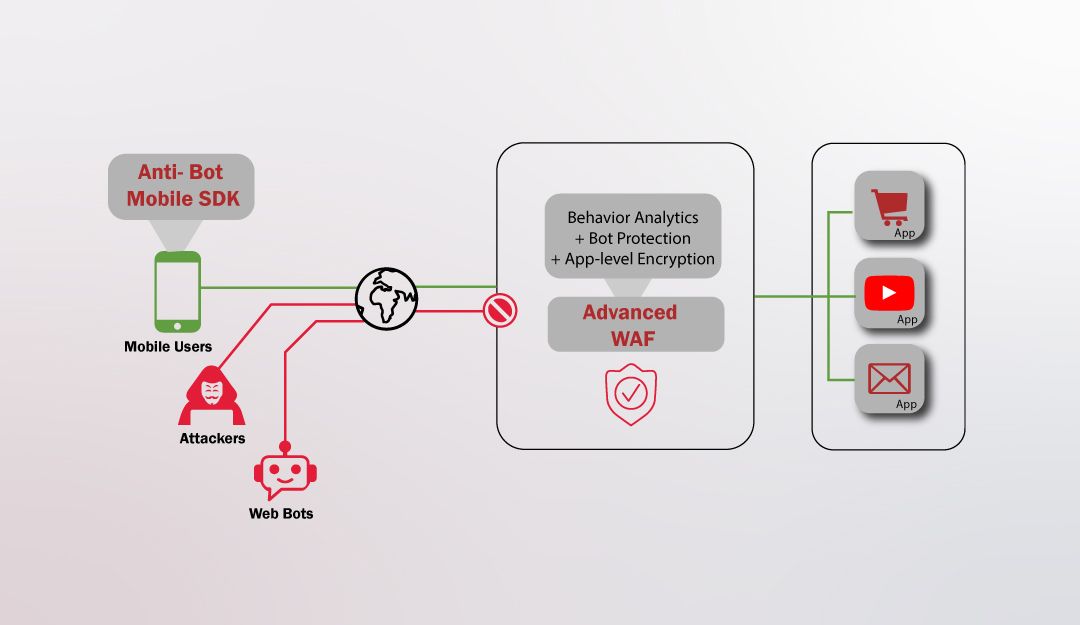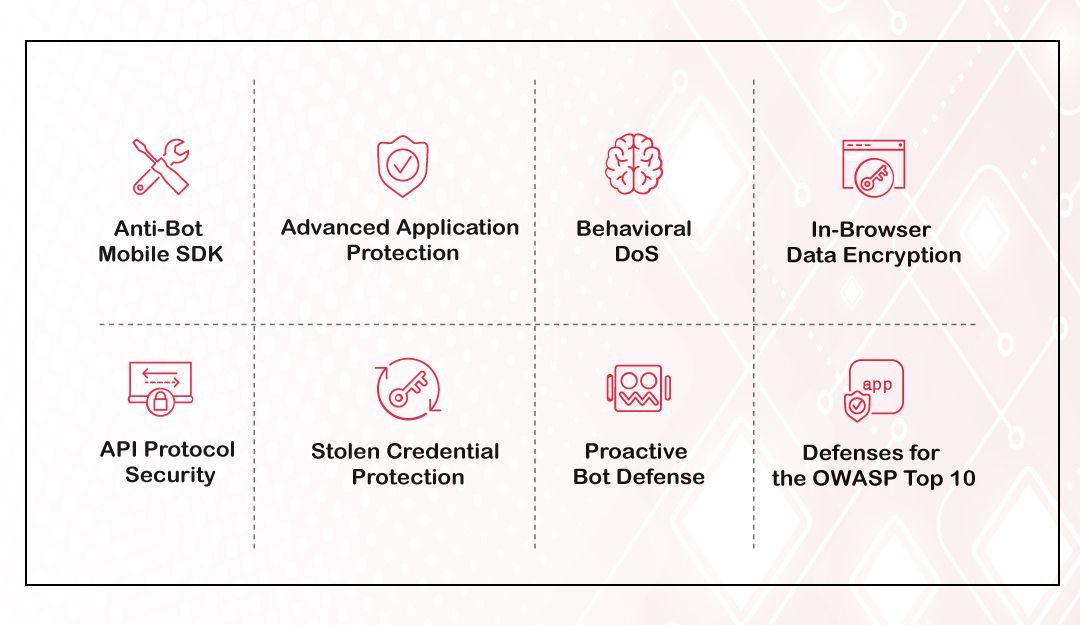Protecting Your Web Application from Modern Cyber Threats with F5 Advanced WAF

In today's world, web applications have become an integral part of businesses of all sizes. From online stores to banking applications, these platforms offer an unparalleled level of convenience and accessibility to customers. However, this convenience comes at a cost - the risk of cyber attacks. As technology continues to evolve, so do the methods of cyber attackers. Modern cyber threats such as SQL injection, cross-site scripting, and DDoS attacks are becoming more advanced and sophisticated, posing a severe threat to web application security.
The importance of web application firewall cannot be overstated. A breach in web application security can lead to significant financial loss, reputational damage, and legal consequences. Therefore, organizations must take proactive measures to protect their web applications from cyber threats. One such solution is F5 Advanced WAF (Web Application Firewall).
F5 Advanced WAF is a powerful security solution designed to protect web applications from modern cyber threats. It offers a range of features and capabilities, including real-time threat detection and blocking, customizable security policies, and advanced reporting and analytics. F5 Advanced WAF uses machine learning and behavioral analytics to identify and block emerging threats, making it a reliable solution for organizations looking to secure their web applications.
In this blog, we will dive deeper into the importance of web application security and the growing threat of cyber attacks. We will explore how F5 Advanced WAF works and the advantages it offers to organizations. By the end of this blog, you will have a better understanding of the importance of web application security and how F5 Advanced WAF can help protect your organization from modern cyber threats.
Understanding Cyber Threats & Importance of Web Application Security for an Organizations
Cyber threats to web applications are constantly evolving, and organizations must be aware of the latest threats to protect their applications effectively. Three of the most common types of cyber threats to web applications are SQL injection, cross-site scripting, and DDoS attacks.
SQL injection attacks involve attackers injecting malicious code into a web application's database to extract sensitive information. Attackers can exploit vulnerabilities in an application's input validation process to inject SQL code into the database. This attack can lead to significant data breaches, resulting in sensitive information being stolen, modified, or deleted.
Cross-site scripting (XSS) attacks occur when attackers inject malicious code into a web application that is executed by the user's browser. Attackers can use XSS attacks to steal sensitive information, such as login credentials or financial information. These attacks can also be used to redirect users to malicious websites or to launch other attacks.
DDoS attacks involve attackers flooding a web application's servers with traffic, overwhelming them and making the application unavailable. These attacks can be launched from multiple sources, making them challenging to defend against. The impact of a DDoS attack can be severe, resulting in a loss of revenue and damage to an organization's reputation.
Understanding the common types of cyber threats to web applications is crucial for organizations looking to protect their applications effectively. Especially, organizations who relies on web-based services or applications or cloud computing, protecting their applications is vital.
Implementing effective web application security measures can safeguard against cyber attacks, ensure compliance with regulations, build customer trust, provide a competitive advantage, and save costs. It can protect sensitive data, maintain business continuity, and prevent reputational damage, making it essential for any organization looking to protect its operations and its customers.
How F5 Advanced Web Application Works?
Advanced WAF from F5 works by analyzing web traffic and applying a set of rules and policies to identify and block potential threats. It uses a layered approach to web application security, combining traditional rule-based firewall techniques with advanced machine learning and behavioral analytics. This approach enables the web application firewall to detect and block threats that traditional firewalls may miss, such as zero-day exploits and other emerging threats.
When web traffic enters an organization's network, F5 Advanced WAF analyzes the traffic and identifies potential threats based on its rules and policies. The system can detect a range of threats, including SQL injection attacks, cross-site scripting, DDoS attacks, and other malicious activity that we mention earlier.
It also uses machine learning algorithms to analyze web traffic and learn from patterns of behavior. This enables the system to adapt its rules and policies to improve its ability to detect and block emerging threats.
In addition to machine learning, F5 Advanced WAF also uses behavioral analytics to monitor user behavior and network activity. This technique involves creating a baseline of normal user behavior and network activity and flagging any deviations from this baseline as potentially malicious.
Once it identifies a threat, it takes appropriate action to block the attack. The system can block traffic at the network layer, application layer, or content level, depending on the type of threat. F5 Advanced WAF can also provide detailed logs and reports on web traffic and security events, enabling organizations to analyze and respond to potential threats quickly.
Features of F5 Advanced Web Application Firewall

Proactive Bot Protection: Proactively defend your applications against automated attacks by bot and other attack tools. This prevents layer 7 DoS attacks, web scraping, and brute-force attacks. Proactive bot defense helps identify and mitigate attacks before they cause damage to the site.
DataSafe: Protect sensitive information from interception by encrypting data while it’s still in the browser. DataSafe encrypts data at the application layer to protect against malware and keyloggers. This renders leaked credentials or data useless.
Behavioral DoS: Behavioral DoS provides automatic protection against DDoS attacks by analyzing traffic behavior using machine learning and data analysis. By continuously monitoring server health and load, anomalies (performance slowdowns or traffic spikes) can be accurately detected and mitigated as needed.
Flexible Deployment: Available as a purpose-built appliance, a cloud-ready virtual appliance, or part of the F5 Silverline service.
In conclusion, Web application security is crucial for any organization that relies on web-based services or applications. Cyber threats, including SQL injection, cross-site scripting, and DDoS attacks, can compromise web application security and impact business operations. Implementing effective web application security measures can safeguard against cyber attacks, ensure compliance with regulations, build customer trust, provide a competitive advantage, and save costs.
F5 Advanced WAF is a solution that provides comprehensive protection against a range of cyber threats, using machine learning and behavioral analytics to identify and block emerging threats. Encouraging readers to take action to protect their own web applications is essential, as cyber threats continue to evolve and become more sophisticated. Implementing solutions like F5 Advanced WAF can help organizations stay ahead of these threats and ensure the security and availability of their web applications.
If your organization is running web based services or application you must be aware of the importance of web application security. Cyber threats are becoming increasingly sophisticated, and traditional firewalls and security measures may not be enough to protect your web applications from these threats.
Contact OM Networks for complete guidance on F5 Web Application Firewall. Our multidisciplinary team of expert will help you set up Advanced WAF for your organization and provide you technical support when required.
Thus you must implement comprehensive web application firewall that provides advanced security features to protect your web applications against a range of cyber threats. With F5 Advanced WAF, you can be assured that your web applications are protected against the most sophisticated cyber threats ever.




Comments ()